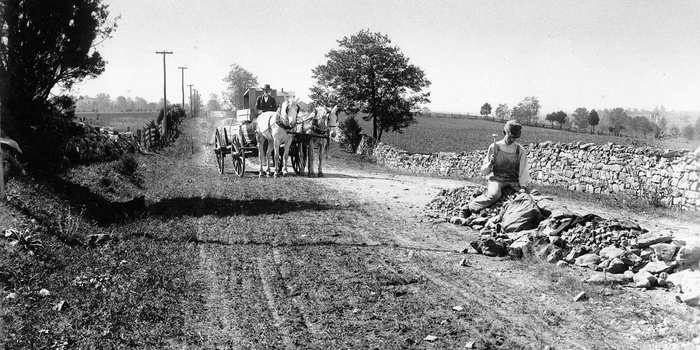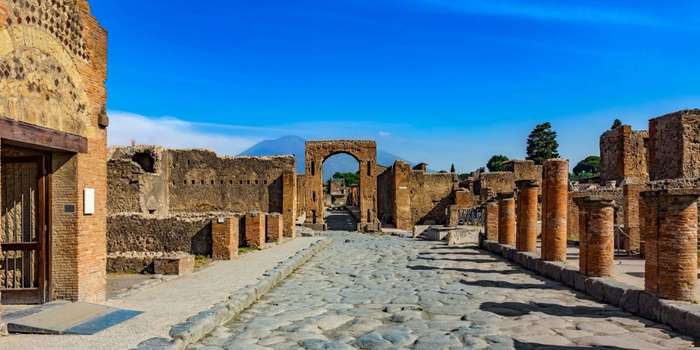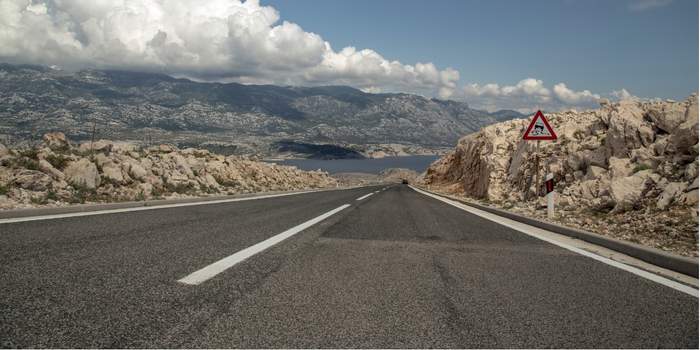Roads have played a huge role in human history. But, do you know how roads shaped the world you travel in today? We recommend you to study the history of roads. You must know how simple paths turn into highways that connect different cities and countries.
Today, you will discover the actual story behind road development that makes travel and trade possible all around the world.
Who Built the First Road in the World?
The oldest paved road was built in Egypt around 2500 BC by Pharaoh Cheops. The purpose behind its construction was to help workers move stones for the Great Pyramid. A long time ago (around 4000 BC), the people living in the city of Ur also built some of the first paved streets with mud and stones.

History of Road Development
Early Roads in Ancient Civilizations
The first roads were built thousands of years ago in ancient civilizations. To move goods and travel between different cities, people in Mesopotamia, Egypt and India made early paths. The materials such as packed dirt, stones and wood used in their construction.
Roads of the Persian Empire (King Darius I)
The Persian Empire roads are actually a part of ancient history. Around 500 BC, King Darius I created the famous Royal Road. It spread for more than 1,500 miles and linked many parts of the Persian empire. This transport system allows you to move soldiers, goods and messages much faster.
Road Networks in Ancient India
After the Persian Empire, Ancient India also created impressive road systems. During the Mauryan Empire (roughly 300 BC), Chandragupta Maurya developed long and organized routes.
Simple routes existed before, but actual road building started during the Mauryan Empire. The most famous was the Grand Trunk Road. It links Pataliputra to Taxila.
Roman Roads (43 – 410 AD)
You will find Roman roads among the most famous in roads history. The Romans built roads to connect towns, armies and trade routes. They carefully planned huge path networks for easy military movement.
Additionally, Roman engineers constructed strong bridges, canals and stone roads across their empire. Many Roman roads lasted for centuries. However, some of them provided the base for roads you still use today.

Road Development (16th-18th Century)
When the Roman Empire ended, many roads turned into rough and damaged paths. Therefore, new efforts to improve them started by the 16th century. In Europe, toll roads called turnpikes are built and drivers pay tools for road maintenance.
Toward the 18th century, roads transformed into more organized and stronger. These roads actually set the stage for modern road building.
Contributions of Telford, McAdam & Metcalf
In the 18th and 19th centuries, basically three men shaped your modern roads. Thomas Telford created strong foundations, smooth surfaces and built large road networks in Scotland.
John Loudon McAdam introduced a layered gravel method which is later known as “macadam”. Further, John Metcalf has contributed to the proper road drainage system. During the industrial revolution, he was one of the first to shape road systems.
Invention of Bituminous Road Surfacing
The innovation and use of bitumen was a major advancement in road construction. It is a sticky material that you will find in natural tar. Builders mixed it with stones to create smoother and stronger roads. So that path surface can handle heavy traffic easily.
Moreover, this method reduced dust, made roads last longer and improved travel comfort too. We can say that it was an important shift toward the modern roads you see today.
Modern Asphalt Roads
In the late 19th century, modern asphalt roads were made with the mixture of bitumen with crushed stones and other materials. The basic purpose is to create a strong, smooth and even surface.
You can drive on them comfortably with heavy traffic also. Asphalt made roads last longer, resist weather and reduce dust as compared to older types. They also form the base of most highways and city streets you use today.

Asphalt in USA By Edward De Smedt
In 1870, Edward J. De Smedt created a special type of road materials called sheet asphalt roads. It is the mixture of natural bitumen with sand. The mixture was heated to make it soft and sticky. Then, this hot asphalt rolled on the path to make smooth and hard surfaces for roads.
In 1876, sheet asphalt was used to build the first durable roads in cities such as Washington, DC and New York. In this way, the foundation for today’s American road system was created.
20th Century Roads
In the 20th century, civil engineers advanced road construction fastly. They construct wide, smooth asphalt and concrete roads. You can use these routes for easy travel with your cars, buses and trucks. Modern highways, bridges and tunnels are also built to connect cities and regions.
These roads can carry heavy traffic safely and have a long lifespan. By this time, present day road networks started to emerge. In short, these roadways basically form the backbone of the transportation you use today.
Oldest Road in the World Still in Use
You can still see many ancient roads exist in the world today. One famous example is the Via Appia in Italy. This road was built by the Romans around 312 BC. You can use it for travel even now. It shows you the skill of early road builders and how well-built Roman roads were.
The stone paving used in its construction. That is why it has lasted for over 2,000 years. Modern engineers also study roads like the Via Appia to learn about durable & strong construction.
Famous Roads in History
You will see some roads are popular due to their importance and impact on the transport system and civilization throughout history. These roads not only allowed travel and trade but also promoted culture, ideas and technology. You can also observe the influence of some of these roads in today’s road infrastructure.
- Roman Roads
- Appian Way
- The Kings Highway
- The Ridgeway
- Silk Road and Amber Road
- Grand Trunk Road
- The Tea Horse Road
- Old Salt Route
- U.S. Route 66
- McMurdo Highway
Who is Called the Father of Modern Roads?
John Loudon McAdam is known as the Father of modern roads. As we mentioned, he created macadam roads with layers of crushed stone and gravel. This method made roads stronger, better drained as well as cheaper to build than older roads.
Hence, his idea served as the base for modern roads and influenced road construction all over the world.
To Conclude
We can say that old paths, busy highways and roads tell a story of human effort and innovation. Now you are clear how first paths in ancient civilizations were built and the role of Romans to expand road networks. Furthermore, their legacy continues to impact the road you drive on today.


-80x69.png)

